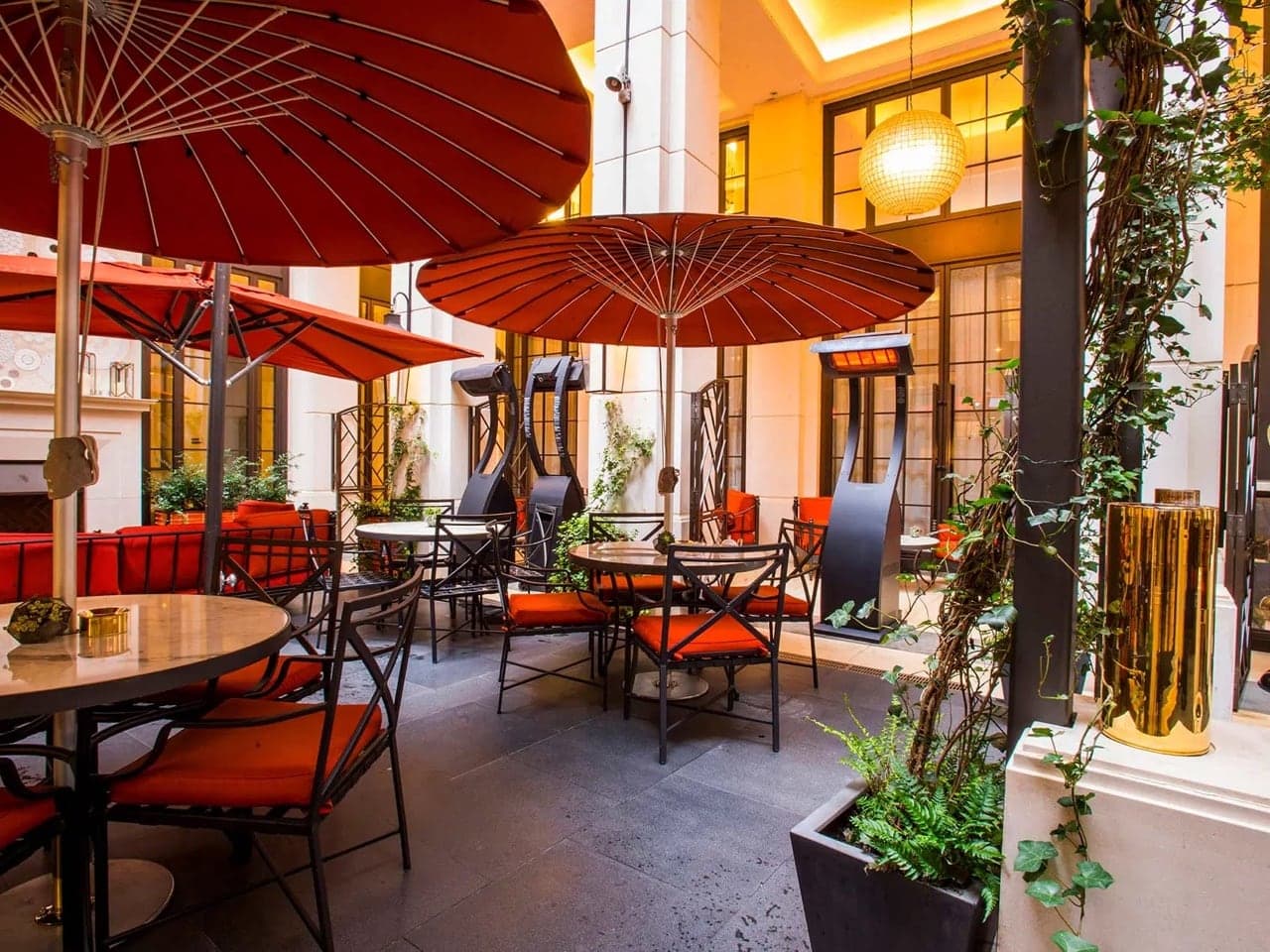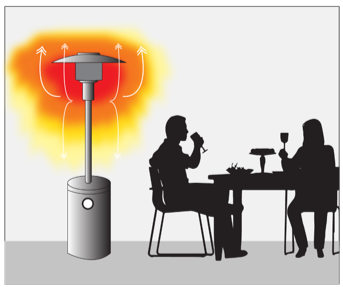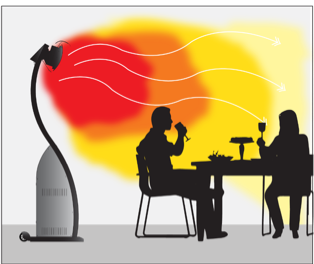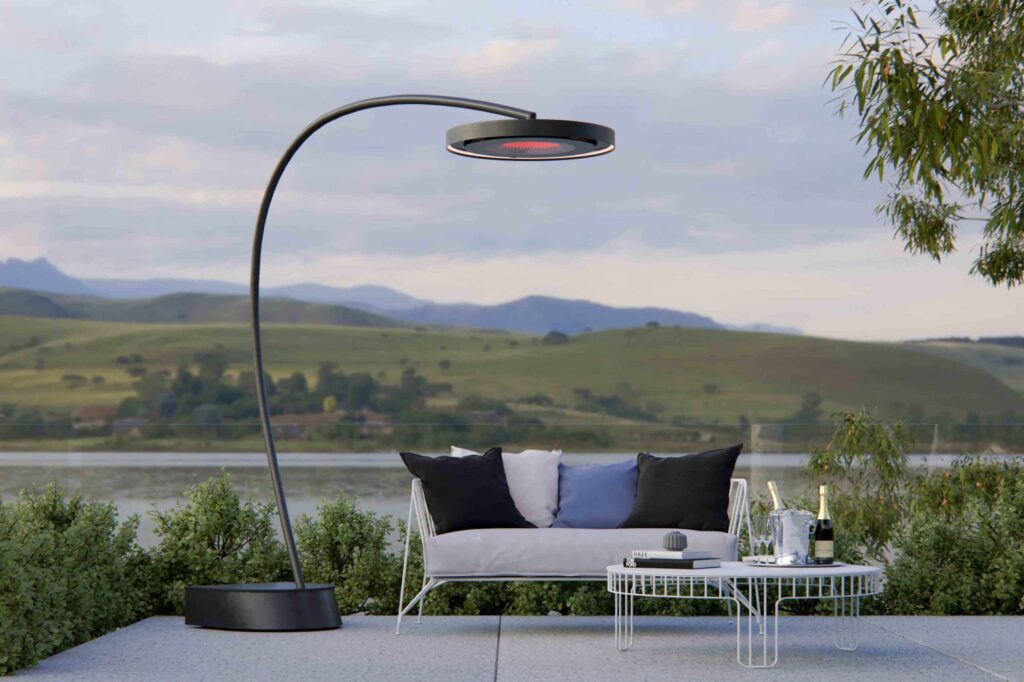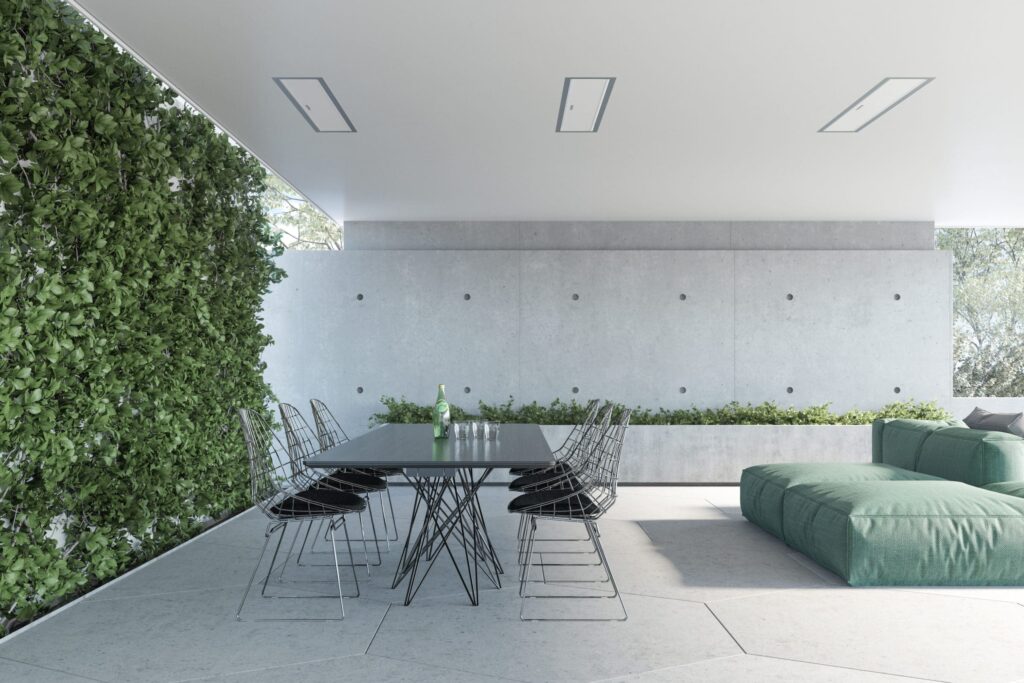Portable outdoor heaters have become one of the must-have items of 2020. As the global pandemic spread around the world, it quickly became clear that one of the safest places to spend time with family and friends was the outdoors. However, with the mercury dropping and winter settling in, outdoor heating became a necessity, sparking a worldwide run on portable patio heaters.
While their manoeuvrability, small footprint and flexible use make portable patio heaters a great choice for both backyard BBQs and commercial beer gardens, not all portable heaters are the same. Here are some of the key things to look for when selecting your next portable outdoor heater.
Conventional or infrared?
Portable outdoor heaters tend to use of two different methods to transfer thermal energy:
a) CONVENTIONAL HEAT: Conventional outdoor heaters emit hot air that mixes with ambient air, enabling them to raise the average temperature of an area. As such they not only warm people, but also the air around them, making them highly inefficient as the majority of the heat is dissipated – ultimately wasting energy.
b) INFRARED HEAT: More innovative outdoor heaters use infrared heat. This method heats the target objects themselves as they come into contact with waves of infrared light. Unlike conventional mushroom heaters that warm the air around objects, infrared heaters work by projecting infrared radiation directly at the object to be warmed. This method is considered the most energy-efficient and effective method to heat people in an outdoor setting.
Direct or indirect heat?
Another critical factor is the manipulation of the direction of the emitted heat. The most effective heaters use directional heating elements to maximise energy efficiency and to avoid the over-heating of guests. Directional heat ensures that the majority of the heat produced is pushed in one direction, therefore allowing for a better and more targeted heat coverage. Indirect heat, on the other hand, pushes warmth in all directions, resulting in a vertical heat loss. Heaters with directional heating elements will be of particular benefit in places like bigger cities like New York where the local government has recently mandated a five feet distance between diners and heaters.
Short, medium or long wave?
Whether your outdoor heater emits direct or indirect heat will also affect how much energy it uses. Portable heaters that use directional heating technology, like the Bromic Tungsten Portable, can cover twice the area as traditional mushroom heaters. The reason for this is that direct heat is a mixture of short and medium wave technology, which produces the highest levels of efficiency. Indirect outdoor heaters, on the other hand, are usually based on long wave technology, which is more susceptible to wind and has a much slower heat up time than direct heaters.
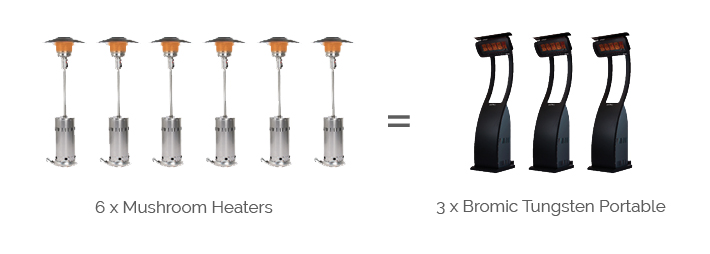
How much will it cost?
Portable heaters will approximately last around 9 hours on a single 9kg tank of LPG, depending on how powerful the heater is (usually between 30– 40MJ). Considering that one tank costs about $30 per refill, the cost benefits of a Bromic Tungsten Portable will quickly add up! For example, any pub and restaurant that currently has 6 mushroom heaters installed, could save around $45 every day, assuming that one tank of propane lasts for around 2 dinner services.
Still confused?
At Bromic Heating, we’re experts at designing cutting-edge outdoor heating solutions that provide the highest level of performance. Together with our complimentary outdoor design service, we are able to provide the products and expertise to ensure your outdoor patio delivers the highest level of thermal comfort at the maximum ROI.

